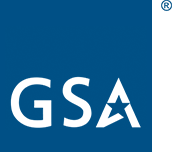Work on an Acquisition Engagement
So you’ve been staffed to a procurement project. Here are some common questions that may come up.
What does "working toward a procurement" mean?
You may have seen language about “working toward a procurement” in one of our partner agreements. In practice, these projects look very similar to any other 18F project, especially at the beginning. They typically start with a discovery period called a , external,Path Analysis where we work with the partner to define the problem space and assess their digital readiness.
The Path Analysis deliverable is usually a roadmap with recommended next steps. For projects working towards a procurement, the next steps might include:
- Investigation of the partner’s procurement capabilities and appetite for agile procurement methods (e.g. smaller contracts that allow for incremental progress and help avoid vendor lock-in).
- Market research to discover products and/or contractors with relevant expertise.
- Developing a procurement strategy and solicitation package. (Don’t worry! The procurement experts in our Acquisitions chapter take the lead on this work.)
- User research and prototyping work to surface product, design, technical, security, or deployment challenges that a future contractor might face.
The user research and prototyping work serve several specific purposes in a procurement project. First, information gleaned from this work can be used to inform a potential procurement or other next step. Additionally, technical barriers can be identified and potentially removed during this phase, setting up contractors to be successful faster. And lastly, this work allows 18F to model good practices for the partner. For example, the 18F team might demonstrate good scrum hygiene, working “in the open,” and the value of cross-functional teams, all of which can help foster better government/industry partnerships.
All of the above is called “pre-award” work in the context of a procurement. If the partner decides to pursue a procurement, 18F project teams can be involved in additional procurement-focused Experiment & Iterate phases. For example, 18F teams can:
- Help evaluate potential contractors and aid in selecting the winning bid
- Provide technical coaching to the client so that they can better evaluate technical bids
- Provide ongoing product coaching for the partner once a contractor has been onboarded
- Serve as technical, design, and strategic advisors throughout all or part of the build
- Provide strategic oversight of the contractor’s work, always working towards empowering our partners to do this themselves
- For more on the “post-award” phase, see this deck(coming soon) produced by the Acquisition chapter
How does this help our partners?
The goal of 18F’s work is to help government agencies provide better digital services to the people they serve. In order for our work to outlast our engagements, we focus not only on creating digital solutions, but also on building our partners’ capabilities in the practices we believe lead to better outcomes—practices like iterative human-centered design and collaborative and open work styles.
However, no matter how well-versed our partners become in these practices, the reality is that most government agencies do not have the in-house resources to maintain and grow the work we’ve done with them. Instead, they may rely on contractors to do this. This is why, in addition to building capacity in digital service delivery practices, we also develop our partners’ capacity to be better buyers and managers of custom software development teams.
Acquisition glossary
- Acquisition: Often used interchangeably with "procurement," an acquisition is a process by which an agency selects a third-party vendor to enter into a contract with to perform some work. The contract will describe the work to be done and outline the roles and responsibilities of the agency and the vendor over the course of the project.
- Procurement vehicle: An existing mechanism that has been set up to allow agencies to work with third-party vendors to provide various services. GSA/FAS manages a number of existing procurement vehicles, including those that cover information technology goods and services.
- Procurement life cycle: The period of time covering pre-award, through award, post-award and the closeout of the contract.
- Pre-award: The period prior to an award where an agency solicits responses from prospective vendors, and prepares to work with a vendor after an award has been made. This period includes the review of materials submitted to an agency by vendors in response to a solicitation, and may also include oral interviews with prospective vendors.
- Solicitation: The formal process for posting an opportunity for vendors to work with an agency. These opportunities are typically posted to sites like , external,FedBizOpps where vendors can find them and respond.
- Award: When an agency has completed the vetting and selection process for a procurement and identifies a specific vendor to work with.
- Post-award: The period after an award has been made, when the agency begins working with a specific vendor to take delivery of specific materials and artifacts as spelled out in the contract.
Where can I learn more?
- Check out related blog posts
- Learn about the two types of procurement support we can provide.

